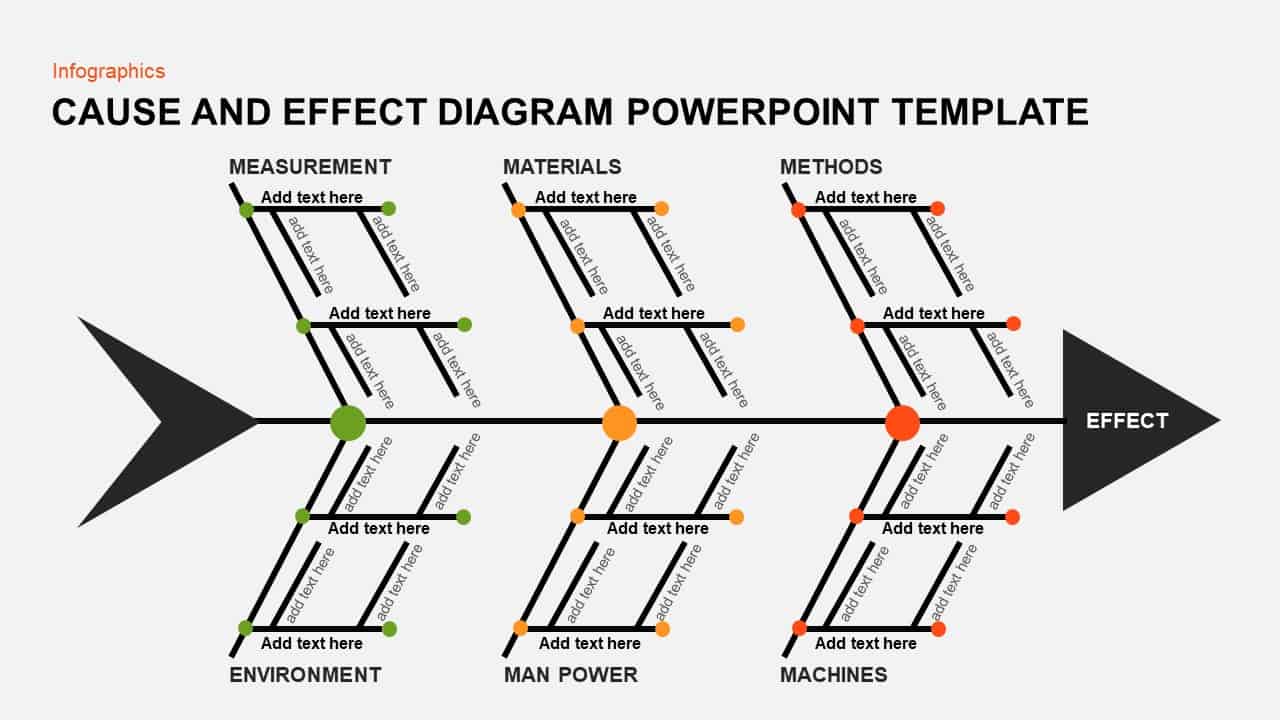Cause and Effect Diagram Template for PowerPoint

Analyze complex root causes and drive continuous improvement with this professional fishbone (Ishikawa) diagram slide. The sleek horizontal backbone features a bold left-pointing arrow labeled “Effect,” while six editable angled ribs represent core cause categories—Measurement, Materials, Methods, Machines, Man Power, and Environment—each with dual text placeholders along upper and lower branches. Small circular markers highlight junctions, and clean text fields allow for clear annotation of contributing factors without clutter. The minimalist layout balances white space with precise alignment, guiding audiences through each causal path to the central outcome.
Built entirely with vector shapes and integrated into master slides, every bone, node, and text field is fully editable in seconds. Adjust colors, swap category labels, reposition branches, or change marker styles to match your branding. The flat design aesthetic, crisp sans-serif typography, and subtle drop shadows ensure a modern, professional look across PowerPoint and Google Slides. Scalable graphics maintain clarity from HD projectors to printed handouts, eliminating formatting headaches and preserving layout integrity during rapid updates.
Ideal for quality managers, process engineers, and project teams, this template streamlines root cause analysis, defect investigations, and risk assessments by providing a structured visual framework. Use it during Kaizen workshops, Six Sigma reports, or stakeholder briefings to identify bottlenecks and prioritize action plans. Duplicate or remove ribs to expand beyond six categories, overlay icon callouts for quantitative insights, or merge bone segments to explore sub-cause relationships. Its intuitive bone structure also adapts well to brainstorming sessions, training modules, and performance reviews, turning intricate data into an actionable visual narrative that engages stakeholders and drives consensus.
Who is it for
Quality assurance managers, process engineers, and project teams will benefit from this slide when conducting root cause analyses, defect investigations, and risk assessments. Continuous improvement leaders and operations directors can also leverage the fishbone framework to facilitate structured problem-solving sessions and workshop activities.
Other Uses
Beyond root cause analysis, repurpose this template for risk-assessment matrices, compliance audits, or feature-prioritization charts. Swap labels to represent project drivers, duplicate ribs for additional categories, or recolor nodes to highlight high-priority issues and corrective actions.
Login to download this file

















































